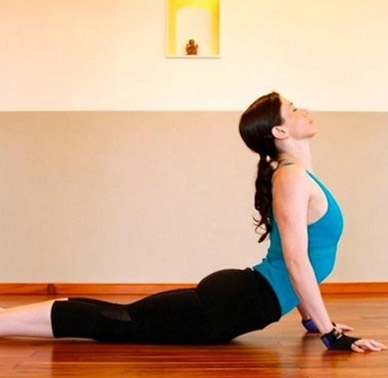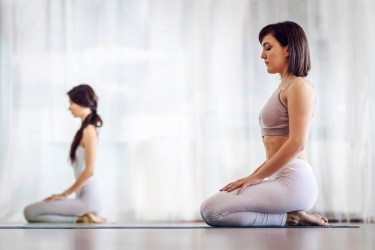
You can find helpful tips and tricks for yoga meditation for beginners here. This article will address Tadasana. Concentration meditation, Plank position, and Third Eye mediation. While each posture has its own benefits, all of them require some form of practice. To begin, try these easy exercises. You'll find that you'll feel a whole lot more balanced after practicing them. Here are a few other yoga meditation tips for beginners:
Tadasana
Tadasana, one of the most popular poses in yoga, is a very engaging pose. Tadasana is a pose that allows for reflection and balance. It also helps to improve concentration. Begin in Tadasana. Focus your attention on an object approximately two feet in front. As you practice Tadasana more, your focus will gradually shift to other parts. Here are some useful tips to help improve your practice.

Meditation through concentration
Concentration meditation is an important practice for yoga meditation beginners. Concentrating on an object can help you increase your physical, mental, or spiritual strength. To focus your attention, you can use a candle flame or a sacred object, symbol, or word. A box of tissues, or a candle flame can be used as a practice object if you are new to meditation.
Plank pose
The plank is an integral part of any yoga meditation practice. It helps to strengthen the mind and build strength. It is so hard that it holds a world record for the longest time. Daniel Scali held that record for nine, thirty minutes and one second in 2021. While a full minute is difficult, any amount of time in plank will build strength and stamina.
Meditation for the Third Eye
The third eye is one among the most important chakras. If it is open, rays from light will flow into your eyes. This will allow you to see auras, visions, and pictures. This will open up your mind to higher levels and spirituality. Third-eye meditation allows you to experience heightened intuition, better focus, and greater mental flexibility. You can try this method if you are looking for yoga meditation tips for beginners.
Transcendental meditation
Transcendental meditation can also be done anywhere. It does not require special equipment and requires no breathing, movement, or controlling your thoughts. Instead, you will sit comfortably in a seat and focus your attention on a mantra. Transcendental meditation has no fixed belief system like mindfulness meditation. Ayurveda, an ancient Indian medical system, may be practiced by practitioners.

Kundalini yoga
The best thing for beginners is to listen to your body and trust God. You should pay attention to your posture during meditation and keep your eyes on your breath. Allow the Universe to guide, nourish, and deliver you. Once you have mastered the proper postures, you will be able to practice the Breath of Fire. For beginners, here's a quick guide:
FAQ
Is yoga helpful for people with chronic diseases?
Yoga may help people with chronic illnesses such as diabetes and heart disease by improving overall fitness, reducing stress, and increasing flexibility.
Yoga can also be helpful for other conditions, such as arthritis and cancer, depression.
How long should a session of yoga last?
Yoga sessions last between 45 minutes- 1 hour. The type and amount of yoga you do will dictate the length of the session. 45-60 mins would be sufficient for strength-building exercises. However, if you're looking for relaxation or meditation, an hour or longer may be necessary.
The length of the class will vary depending on the type of yoga you take. Some classes are fast-paced while others focus on slow, deep stretching.
What are the benefits for beginners of yoga?
Yoga can improve your posture and flexibility as well as strength, flexibility, breathing control, relaxation, mental clarity, breath control, and muscle strength. You will also be more aware and connected to the world around you, your fellow humans, and yourself.
Yoga teaches you how to live life fully. You are taught to listen to your mind and body. Accept yourself for who you are. Learn to let go of tension and stress.
You learn how to relax and live your best life.
How long does it take for a professional yoga instructor?
It depends on what kind of yoga you're doing. Some styles are faster than other. You can expect to improve your skills even if this is your first attempt.
The more you practice, the better you'll become. And you'll notice improvements after just a few weeks of regular practice.
How does yoga change your body?
Yoga helps you to relax and stretch. You will also feel great. This is due to yoga improving flexibility, strength, stress management and overall health. This can lead to improved sleep quality, better concentration, and higher energy levels.
Yoga can also increase blood flow, which will make you less susceptible to getting the flu. Because yoga encourages deep breathing, oxygen to your brain is increased.
Yoga can relieve tension and pain. The postures help strengthen muscles and joints and improve posture.
You should therefore practice yoga daily to maintain your health and happiness.
Statistics
- The people in the yoga group were 37 percent more likely to have quit smoking by the end of the 8-week program. (nccih.nih.gov)
- According to the Agency for Healthcare Research and Quality, falls are incredibly common among older adults in nursing facilities. Even the simplest ones can increase the risk of death (24). (healthline.com)
- About one in seven U.S. adults practiced yoga in the past 12 months, according to a 2017 national survey. (nccih.nih.gov)
- A 2020 review of 27 studies (1,805 total participants) of yoga interventions in children or adolescents found reductions in anxiety or depression in 70 percent of the studies, with more promising results for anxiety. (nccih.nih.gov)
- Gentle yoga has been shown to ease some of the discomforts of tender, swollen joints for people with arthritis, according to a Johns Hopkins review of 11 recent studies. (hopkinsmedicine.org)
External Links
How To
What can yoga do for your menopause symptoms
Yoga, an ancient form of meditation, focuses on breathing, stretching, and meditation. It originated in India. It has been used to stay fit for thousands upon thousands of years. As people search for other ways to stay active and healthy during stressful times, this has been gaining popularity.
Yoga is based around using physical postures (asanas) to stretch muscles, improve posture and increase flexibility. This can help relieve tension, increase strength, and endurance.
There are several types of yoga. Each type of yoga focuses on a specific aspect of the body such as breathing, stretching and relaxation.
All forms of yoga aim to bring about balance in the mind and body. Yoga has many benefits, including improved fitness, weight loss, improved sleep quality, energy levels, and reduced stress.
Several studies have shown that yoga may be beneficial for treating conditions such as depression, anxiety, and insomnia. There is not much evidence to support its effectiveness in treating other health conditions, such as those related to menopause.
As well as helping you feel healthier and happier, yoga teaches you how to relax and manage stressful situations - skills that could be helpful when dealing with menopause.
It is important that you know that yoga can cause soreness in the muscles after exercising. Before you start yoga, talk to your doctor about any concerns you may have.